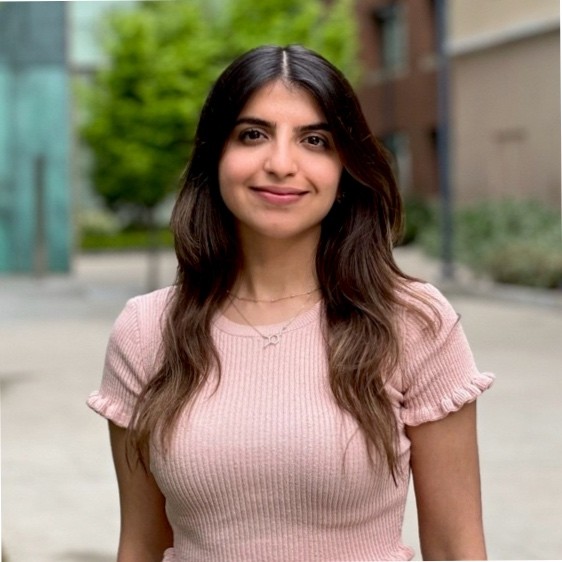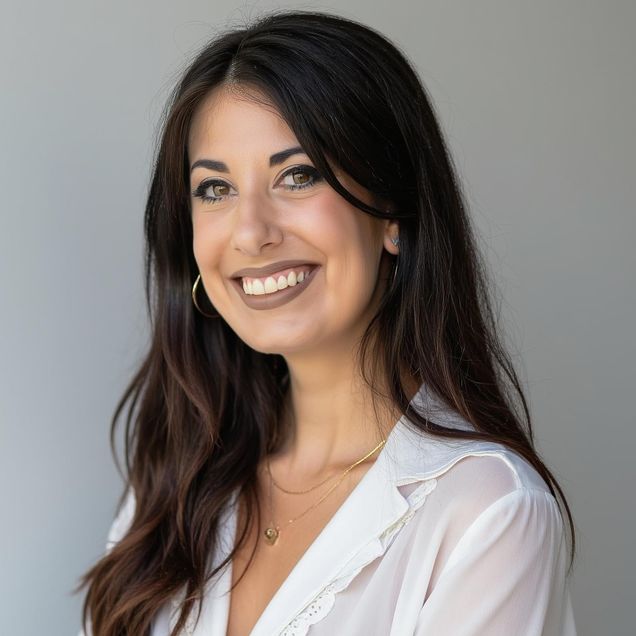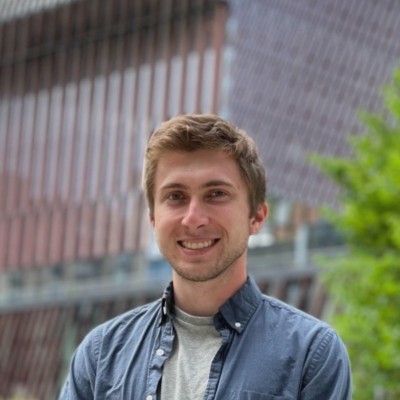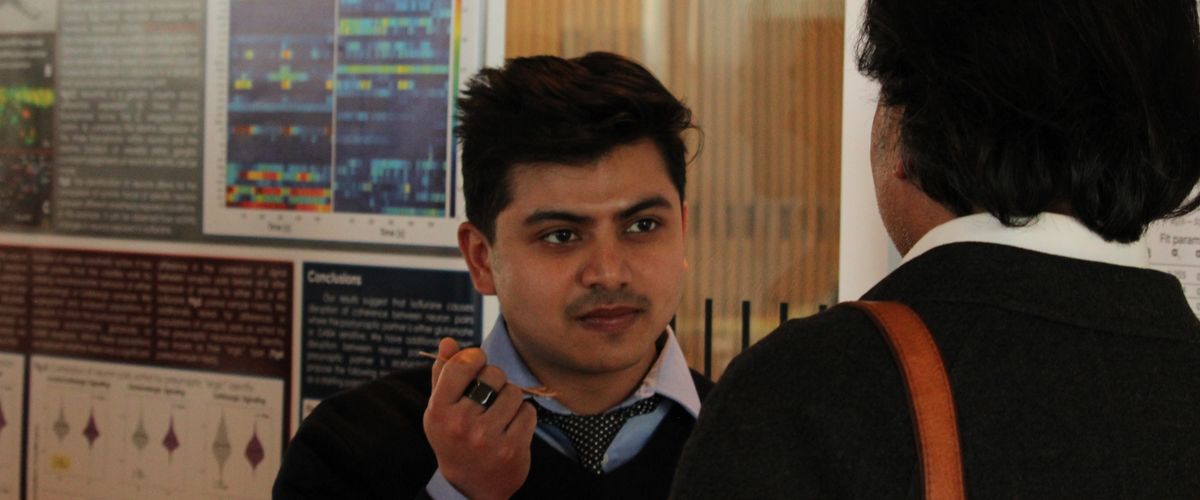NPC Fellows

Tushar Arora | T32 Grant 2025
With support from the NIH T32 grant, Tushar Arora will continue his work with Dr. Brian DePasquale––focusing on neural data analysis and developing machine learning models to understand neural dynamics underlying motor control and decision-making. This work aims to improve our ability to decode behavior, forecast neural activity, and understand how different brain areas communicate. Tushar’s research will integrate advanced machine learning techniques with multimodal experimental datasets consisting of electrophysiological recordings, optogenetic stimulation, and mechanical perturbations. He also plans to extend these methods to brain-computer interface applications, ultimately striving to develop better neural prosthetics. A robust and generalizable model for interpreting neural dynamics will not only advance closed-loop experiments but also offer new approaches for analyzing discrete time series data and can be deployed in BCI devices.

Anne Curtis | T32 Grant 2025
With funding from NIH’s T32 grant, Anne Curtis will continue her work with Dr. Lynne Chantranupong studying neuromelanin, a byproduct of dopamine metabolism. By generating neuromelanin in stem cell derived organoids, Anne is able to investigate the function of this pigment and how it influences vulnerability during Parkinson’s Disease. Furthermore, she plans to utilize Interference Differential Absorbance Confocal (IDAC) Microscopy, developed by the Mertz Lab, to track neuromelanin with improved resolution. Anne hopes to elucidate the function of this poorly understood pigment and uncover new therapeutic strategies for treating Parkinson’s Disease.

Negar Rahmani | T32 Grant 2025
With support from the Neurophotonics Fellowship, Negar Rahmani will investigate how Reelin-expressing neurons in the entorhinal cortex communicate with the hippocampus to support memory formation, and how this signaling is modulated by alternative splicing of Reelin’s receptor, Apoer2. Working in the lab of Professor Angela Ho, and co-sponsored by Professor Steve Ramirez, she integrates molecular genetics, circuit-level manipulations, and two-photon calcium imaging to examine how distinct Apoer2 splice variants influence Reelin signaling, synaptic plasticity, and neural circuit dynamics. Her research seeks to identify early disruptions in memory-related pathways that contribute to Alzheimer’s disease and to advance the application of neurophotonics tools in systems neuroscience.

Courtney Aul | T32 Grant 2024
With funding from NIH’s T32 grant, Courtney Aul will continue her work with Professor Alice Cronin-Golomb studying the link between cognition and motor function in Parkinson’s patients. To conduct this research, Courtney will integrate neuroimaging, neuropsychological, and behavioral methods. She also plans to use fNRIS to study patients’ gaits outside of a controlled lab setting to better understand the influence of the distractions of daily life on gait. If Courtney is able to find a causal link between gait and attention, she hopes future research will be able to create therapeutic interventions for improving the life quality and expectancy for Parkinson’s patients. To read more about Courtney’s research, click here.

Gabrielle Magalhães Ulloa | T32 Grant 2024
With funding from NIH’s T32 grant, Gabrielle Magalhães Ulloa will continue her work studying affective learning and decision making in adolescent rodents. Working with Assistant Professor Heidi Meyer, Gabrielle will specifically examine the role of the prelimbic region of the prefrontal cortex to better understand age differences in decision making. To do so, Gabrielle will use a fiber photometry technique to look at Parvalbumin-positive neurons, which she believes are key to understanding these age differences. This research fits into Gabrielle’s broader interest in understanding human decision making, trauma response, and anxiety. To read more about Gabrielle’s award and project, click here.

Matthew Simkulet | T32 Grant 2024
With funding from the NIH’s T32 Program, Matthew Simkulet will continue his work with Assistant Professor Tim O’Shea studying the brain’s response to implanted devices. Matthew will investigate microprisms implanted in mouse cortexes using two-photon microscopy in order to examine the brain’s natural wound response. In the long term, Matthew’s research aims to establish a baseline understanding of how such implants affect the brain on a cellular level. Such an understanding would lay the foundation for therapeutic intervention that could mitigate the side effects of implants. To read more on Matthew’s award and project, click here.

Kate Herrema | CAN DO Award 2024
With funding from the Neurophotonics Center’s CAN DO award, graduate student Kate Herrema will advance her thesis project on combining biomaterials, neurorecording devices, stem cell technology and in vivo imaging to guide the development of human cortical organoids transplanted in the mouse brain. Working with faculty from across the Charles River (Tim O’Shea, Martin Thunemann, Anna Devor) and Medical (Ella Zeldich) campuses, this project bridges the two schools in one, convergent project, and will establish new methods and tools for other stem cell investigators within the NPC and beyond. To read more on Kate’s award and project, click here.

Regina Sloutsky | NPC Collaborative Project Award 2024
Thanks to the fall 2024 Neurophotonics Center Collaborative Project award, PhD student Regina Slotsky will take part in the “exoWALK” project: EXOsuit-assisted Walking Automaticity and Locomotion Kinetics. Working with Associate Professor Lou Awad and Professor David Boas, Regina will help to advance methodological approaches to measuring the automaticity of walking using fNIRS, as well as multi-objective soft robotic exosuit parameter tuning and single trial real-time applications of fNIRS during post-stroke walking––such as the association between functional connectivity and walking quality. The team has already developed a soft, wearable robotic exosuit that provides external mechanical assistance to the paretic limb, and have produced solid results. To read more on her work, read Regina’s article post here.

Sudan Duwadi | CAN DO Award 2023
Through a collaboration with the fNIRS core of the Neurophotonics Center, and following Professor Kamal Sens $2.96M NSF Award, graduate student Sudan Duwadi will be working with Professor Sen to use fNIRS measurements with a wearable system and machine learning methods to decode where a subject is attending in a complex scene. To read more on Sudan’s award, read his post here. To learn more about Professor Sen’s NSF award, read the article here.
